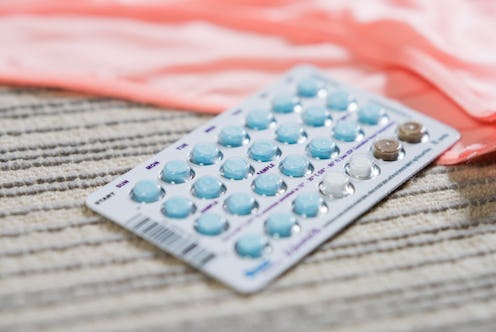
Considering how much policy makers, thought leaders, and politicians love to talk about women's reproductive rights, one could surmise we're all completely in the know when it comes to birth control, right? Well... let's just say you might be surprised by the responses received when Flip the Script's Liz Plank asked both men and women how birth control works. The bottom line? Men were (sadly predictably) in the dark — but women didn't fare much better. It's horrifying and hilarious in equal measure, and seriously demonstrates the dire need for more educated and open discussion surrounding sex and reproductive rights.
Granted, birth control can be confusing. Some of the devices you can use to prevent pregnancy from occurring in the near future kind of look like they come from the future. There are seemingly a million methods out there to suit myriad needs, which is why it's particularly important to know your options. And, welp, this video proves we're all a bit befuddled on that front. "Clearly it's not just men who are confused about this stuff — it's women, too," Plank aptly points out in the video. "And that's why this whole debate around Planned Parenthood and other places like it is so disappointing. Health services and sex ed benefit everyone, and clearly we need all the help we can get."
So, in that spirit, let's explore the contraceptives discussed (and by "discussed," I clearly mean "misidentified and comically botched"). Because these are our bodies, and we shouldn't have to ask anyone what we can — or what we are — putting in them.
1. The Pill
Props to the guy rocking what might very well be Ross' infamous Friends sweater — he was impressively well-informed about the various forms of contraceptives and didn't shy away from calling the vagina by its rightful name. Plus, he basically pegged the gist of birth control pills when he said they trick your body into thinking you're pregnant so you don't actually get pregnant. The pills, which are also called oral contraceptives, do this by using the hormones estrogen and progesterone to keep the ovaries from releasing eggs. This causes changes in the uterus and cervix which prevent sperm from joining an egg. Other benefits include easing cramps and clearing acne.
2. IUD
Adorable fedora guy totally missed the boat (Get it? Fishing ... a boat, ha!) on this one. While his answer provided great comic relief, it is obviously entirely wrong. In reality, an IUD — or intrauterine device — is a small, T-shaped device inserted into the uterus, where it releases progesterone, which thickens cervical mucus in order to block sperm. Those little swimmers are further deterred by the inflammation in the uterus caused by the IUD's implantation. Nonhormonal IUDs are also available, though less common. Depending on the type, IUDs can be left in place for five to 10 years.
3. Diaphragm
Although the diaphragm was a very popular form of birth control for many of our mothers, they've fallen out of favor, so many young women today know little about them. Well, here goes: A round latex or silicone dome, the diaphragm is inserted inside the vagina to block sperm by covering the cervix. For added protection, spermicide is placed inside the diaphragm before being inserted. This is done up to six hours before having sex, and must be reapplied every round.
4. Female Condom
Although it was a good guess, this isn't a mitten. Rather, it is the elusive female condom — a pouch that is inserted into the vagina to act as a lining. Just think of it as sort of a reverse condom. And don't worry, despite your fears, it won't get sucked up and lost inside your body. One attached ring anchors the condom inside, while another anchors it outside the vagina. After sex, you simply stand, twist the outer ring, and remove gently.
5. Spermicide
Nope, not an old bag of semen! Quite the opposite, in fact, spermicide is a birth control method that stops sperm from moving — or, as one woman puts it, "genocide for sperm." Spermicides can be used to prevent pregnancy by being inserted deep in the vagina shortly before having sex. Having said that, spermicides aren't terribly effective on their own and are best as part of a birth control buddy system (see #3).
6. Vaginal Ring
While her mystical description is more fun, the technical definition of a vaginal ring is a small plastic ring that emits the same hormones used in the combined birth control pill. A great alternative for women who hate the hassle of remembering to take their birth control pills every day, the vaginal ring stays in 21 days after being inserted.
Check out the full video below!